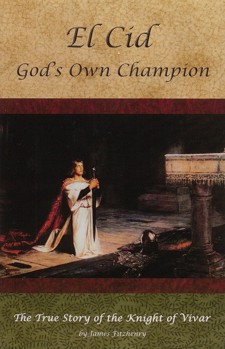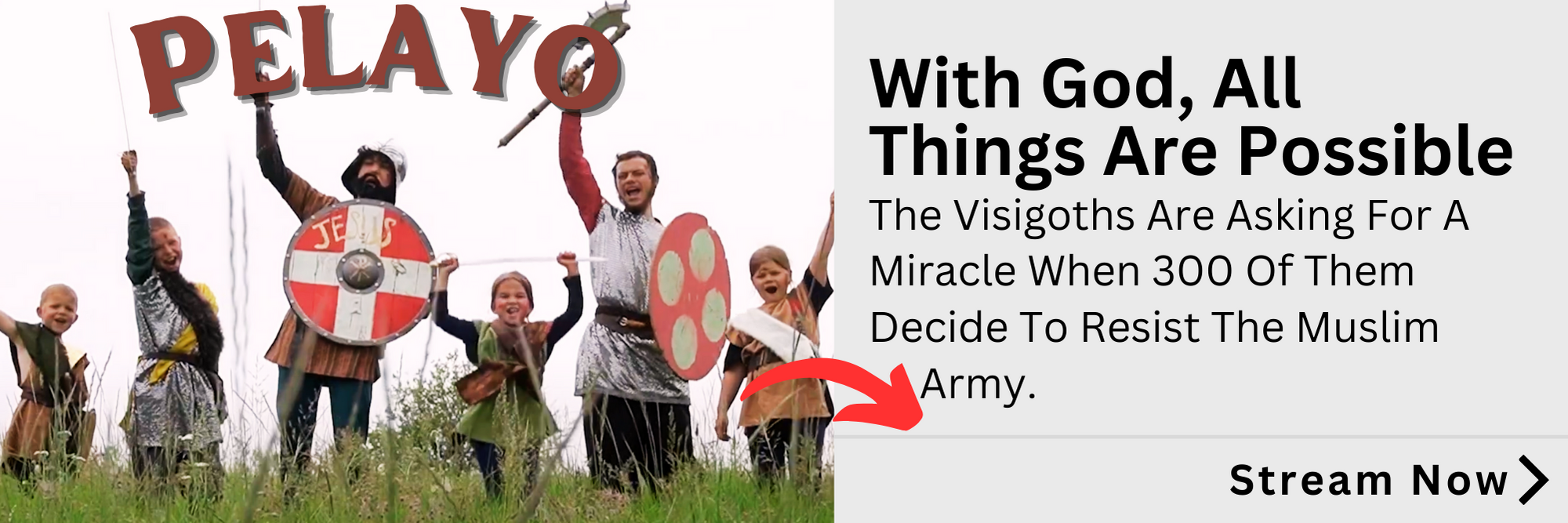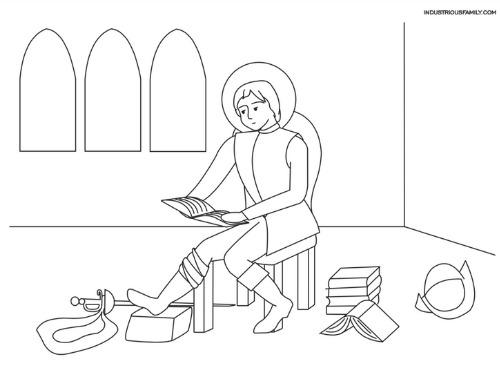Don't miss your chance to invest in 'Fabiola'!
Visit our crowd-funding page for our new production, "Fabiola"!
- Home
- Pelayo The Movie
- Spanish Heroes
Famous Spanish People in History: Spain's Heroes Who Shaped a Nation
Disclaimer: As an Amazon Associate, I receive a small commission if you purchase items on this page at no extra cost to you.
The preserving and telling of the stories of national heroes generates a society that produces champions, conquistadors, and commandos. Spain is a prime example, with famous Spanish people in history like Queen Isabella, Hernan Cortes, Philip II, and Don John of Austria. Lesser-known, yet equally captivating, are Pelagius of Asturias and Rodrigo Diaz, also known as El Cid. The title "El Cid" was a mark of honor, given only to the finest knight in all of Spain. Rodrigo Diaz has held this title for centuries, his name synonymous with chivalry and virtue.
James Fitzhenry's El Cid, God's Own Champion: The True Story of the Knight of Vivar captivates readers of all ages, inspiring them to imitate El Cid's virtues as a Catholic hero. The Cid’s humility, patience, and strategic brilliance helped him combat both Muslim invaders and the jealousy of his own countrymen. Even in exile, Rodrigo built a province where Christians held the upper hand over the Moors, and he crushed Muslim troops at the height of their power. Even Muslim historians praised his virtues.
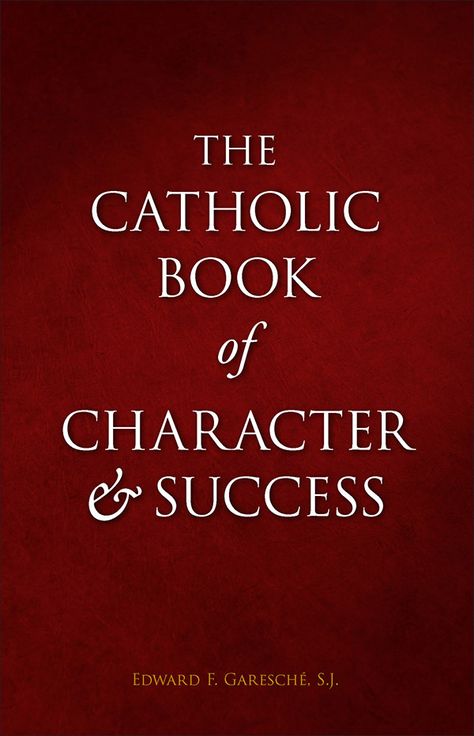
This biography reminds us that El Cid faced the same enemies we encounter today: the world, the flesh, and the devil. It calls us to be everyday heroes, like El Cid, whose life stands as an example of maximum effort, unwavering justice, and humility. Modern attempts to defame heroes like the Cid, Queen Isabella, and Hernan Cortes only prove how vital it is to share these stories. Fr. Garesche’s The Catholic Book of Character and Success calls young people to courage and heroism, reminding us all, “You have within you the stuff of heroes.”
1. To Understand The Cid And Other Famous Spanish People In History, One Must Know Spain And Her Traditions
In the first chapter of Fitzhenry's book, he emphasizes the significance of Spain's heroes in preserving the nation’s identity. Since Spain was engaged in both a cultural and physical war with the Moors, handing down inspiring stories of famous Spanish people in history was crucial.
Fitzhenry notes that El Cid was deeply immersed in Spanish culture and traditions. Stories of St. James the Greater, Charles Martel, and Pelayo were kept alive for generations, ensuring Spain’s Christian heritage endured. Every Spanish child knew of St. James’ miraculous appearance in battle to fight the Moors. But do we?
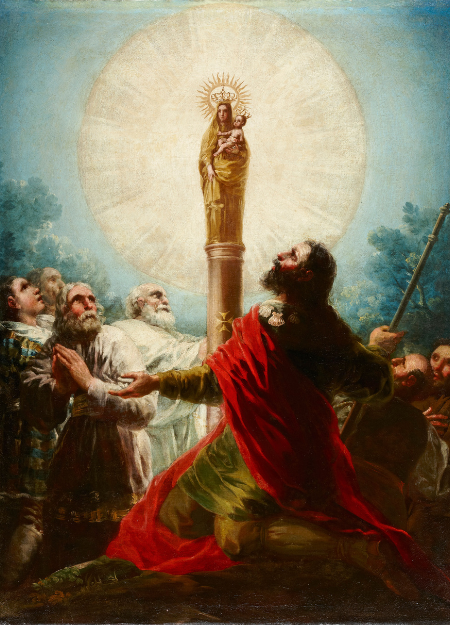
Before His Ascension, Christ commanded His Apostles to preach the Gospel to all nations. St. James the Greater sailed to Spain, the furthest west country at the time, fulfilling this call. Despairing at his slow progress, he was visited by Our Lady—marking the first Marian apparition. Fitzhenry recounts, “The Blessed Virgin stood before him upon a pillar supported by angels, and encouraged St. James by revealing the great faith Spain would have in the future.” Today, this site is home to the Basilica of Our Lady of the Pillar in Zaragoza, Spain.
After returning to Judea, St. James was martyred, and his relics were returned to Spain. In the 9th century, he revealed their resting place by guiding a hermit with a star to the site—now the famous pilgrimage destination, Santiago de Compostela.
In 841, during the Battle of Clavijo, St. James appeared on a white steed, leading the Christians to victory. "St. James and strike for Spain!" became the nation’s battle cry. I probably don't need to tell you as it almost goes with out saying that St. James is the patron of Spain.
2. The Spanish Hero Pelayo And His Band Of 300 Do Everything Possible To Win A Seemingly Impossible Victory Against The Moors
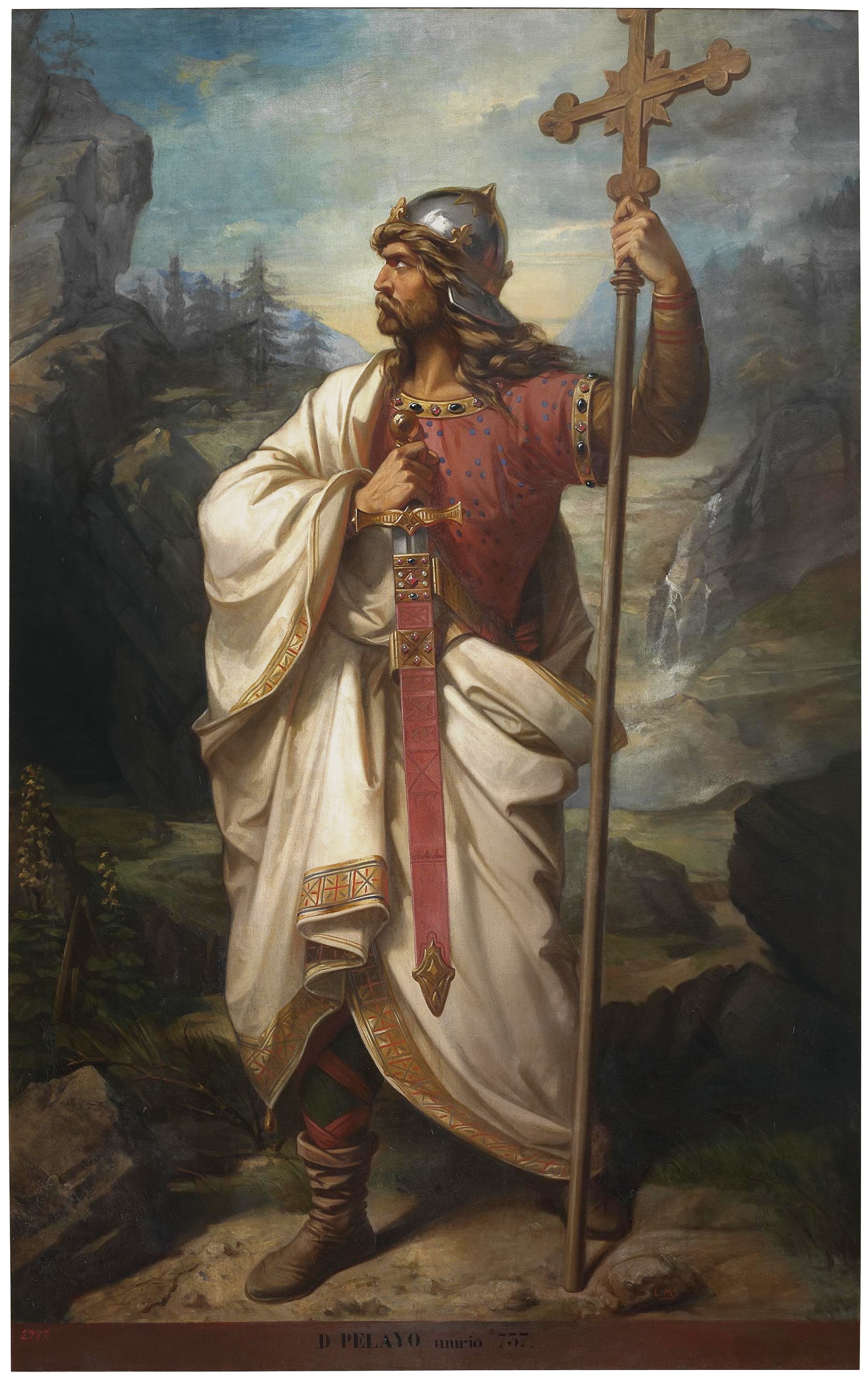
In El Cid, God's Own Champion, the author says, "There is another remarkable tale that Rodrigo would surely have known, but that which is not much remembered in our own day, and that is the story of how it is that there is any Spain left at all after the Muslim invasion...It was Pelayo whose resistance saved Spain."
Spain had already been overrun by Muslim forces when Pelayo and his small band of 300 men staged an incredible last stand in the Asturias Mountains. Similar to the biblical story of Gideon, Pelayo trusted in divine intervention, particularly the intercession of the Blessed Virgin Mary.
The legend of St. James and the story of Pelayo's victory over the Moors at Covadonga were handed down to the Cid's generation and inspired them. They heard the stories of their heroes and they became champions.
3. Isabella, The Catholic Queen, Is The Product Of Centuries Of Heroes And The Handing Down Of Their Stories
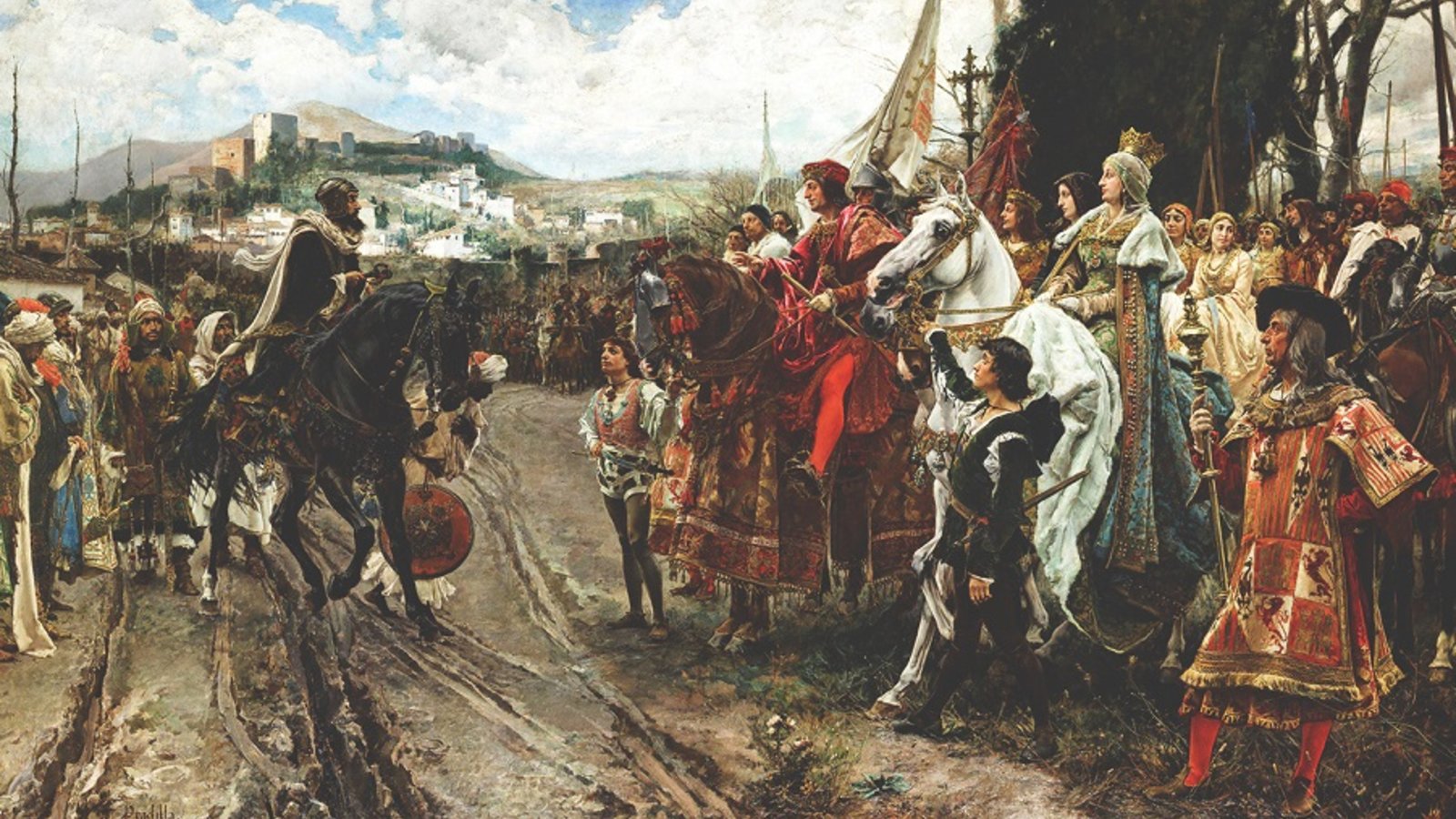
Spain was long believed to be the ends of the earth, and it seemed impossible to travel west to reach the east. Yet, in 1492, Queen Isabella of Spain made this vision a reality when she supported Christopher Columbus in his groundbreaking voyage. While Columbus is often credited with discovering the New World, it was Queen Isabella’s unwavering faith and support that enabled his journey and shaped the course of history. One of the best works that I have read about Christoper Columbus is Fr. Hardon's book, The Catholic Discovery of America.
Isabella, the Catholic Queen, has been grossly and unfairly depicted by modern historians. One of the most famous Spanish people in history, this heroic damsel finished the battle that Pelayo started. At the Battle of Granada, she successfully destroyed Muslim strength in Spain. Granada was the last Muslim stronghold to fall, marking the culmination of a long struggle to reclaim Spain from centuries of Muslim aggression. Isabella brought all of Spain together, finishing what the heroes before her had started—driving the Infidel from the homeland. She had enough energy afterward that she was the only monarch who listened to Columbus' outrageous idea of sailing around the world. (Remember, Spain was at the end of the map.)
In The Jesuits, Malachi Martin dedicates a few pages to describing the Siege of Granada. He writes, "Paradise, which Muslims believed Allah allowed faithful Muslims to enter after death...would supply all that the arid, burning sands and steppe of the desert had always denied their Arabian ancestors: green, luxuriant vegetation, meadows carpeted with unimaginably beautiful flowers; clean, clear, fresh ever-leaping fountains; cooling breezes; balmy shade beneath kindly palm trees; plentiful food; sweet pleasures with beautiful women; slaves galore to attend to their every whim and wish; no cold nights or boiling hot days, but perpetual lightsomeness, instead; and the undisturbed strains of desert music played by angels on heavenly lyres." For the Moor, Granada was Paradise on earth, or the nearest thing to it. The leave-taking from that earthly Paradise was heart-rending and later inspired much pathos and poetry. "Woe is me! Granada!" the Muslims cried as they turned away.
The place along the river where the Moors stopped to look at Granada, now with the Christian Crusader flag flying over its walls, is called by Spaniards "The Last Sigh of the Moor". Martin reflects on the significance of this location, saying, "The safety of the Kingdom, its pride and beauty, was tied to such places by folklore and religious fervor as well as love of Spain."
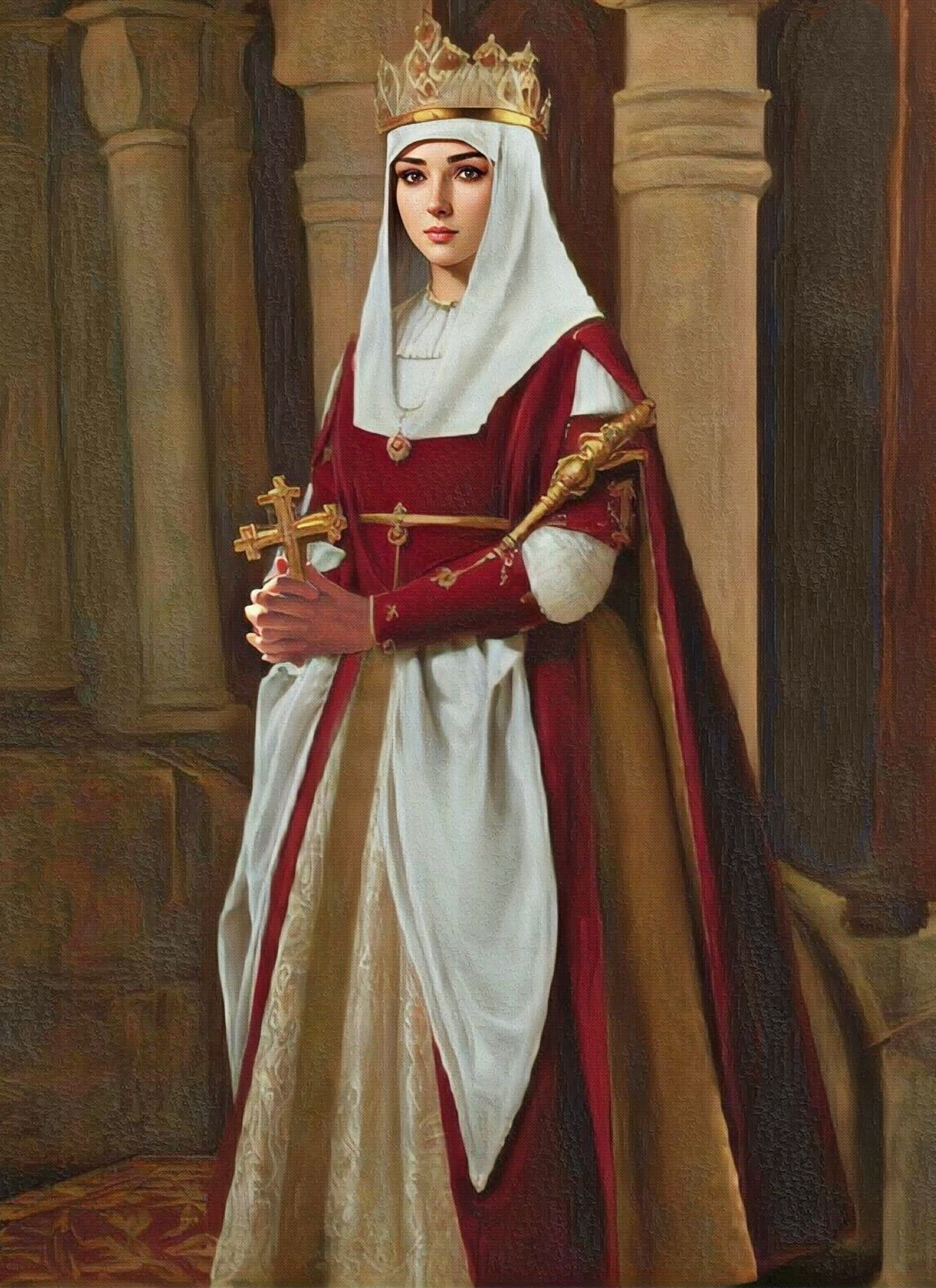
Isabella’s reign was transformative for Spain, not only because of her support of Columbus but also because of her role in finishing the Reconquista. In the same year Columbus set sail, she and her husband Ferdinand successfully drove the Moors out of Spain, solidifying their place as the Catholic Monarchs and establishing Spain as a dominant world power. Isabella was dedicated to spreading the faith, improving education, and building Catholicism throughout her kingdom.
Despite modern controversies surrounding these famous Spanish people in history, Queen Isabella’s legacy as one of the most best Spanish rulers remains strong. Her commitment to the Catholic faith, her vision for Spain, and her support of Columbus' expeditions helped shape Western civilization. Books like Isabella of Spain: The Last Crusader by William Thomas Walsh highlight her exceptional reign, while films like Columbus: Adventures to the Edge of the World offer a glimpse into the thrilling journey she made possible.
Because of her final stand against Islam, the future famous Spanish people in history would reach out to the New World to evangelize the natives. Because of this liberation, Spain was able to send a Hernan Cortes to destroy the temple dedicated to the demon gods and lay a Catholic foundation in Mexico.
It would be missionaries from this Spain who would weather the New World's tropical jungles and dry deserts to spread the Gospel to the ends of the earth. And it would be the great Spaniard, St. Ignatius of Loyola, who would establish the Jesuits who preached among the Native Americans.
4. The Champion Hernan Cortes Scuttles His Return Home And Marches Into The City Of Blood To Destroy The Temple Of The Devil Gods
In my mind, another word for hero is conquistador, though others may disagree. One such hero from Spain is the acclaimed Hernan Cortes. In Christ and the Americas, Anne Carroll describes him in a way that evokes only respect and honor. Like Queen Isabella, Cortes is now unfairly depicted in history books. Why was it so important in El Cid's time to pass down the stories of heroes, yet today, we are told false tales of their faults? These men are cast as blood-thirsty murderers when they were truly champions.
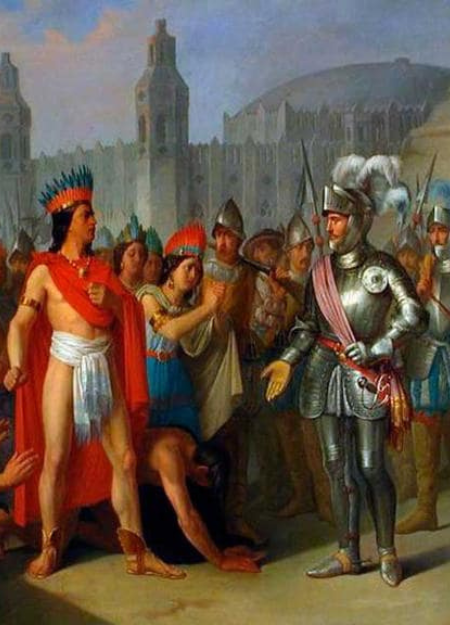
Fitzhenry’s quote about El Cid applies here: Cortes' honor faces a greater danger now, as his story is written by modern scholars who understand him even less than the pagan Aztecs he conquered. Cortes famously scuttled his ships upon arriving in Mexico, demonstrating to his men that there was no turning back. His mission? To bring the light of Faith to the human-sacrificing Aztecs.
Cortes’ arrival in the Aztec year 1-Reed fulfilled a prophecy of Quetzalcoatl’s return—a ruler who had banned human sacrifice. Cortes, arriving on Good Friday, dressed in black, was seen by King Montezuma as the prophesied ruler. Montezuma initially welcomed the Spaniards, fearing judgment for the return of child sacrifices. Cortes immediately began destroying temples dedicated to the devil. Eventually, the Aztecs realized Cortes was not their returned god but a Catholic Spaniard with the fire of his ancestors' battles against Islam.
One of my favorite stories is when Cortes faced Panfilo Narvaez, who arrived in Mexico seeking gold. Narvaez declared war on Cortes, only to be easily defeated. Credited with very little humility, Narvaez looked at Cortes and presumptuously said: "Captain Cortes, it has been a great feat, your victory and capture of me." I can imagine our humble champion holding the events of his past in his mind's eye. He who had marched into heart of the empire of blood and had toppled the temples of the devil gods looked at Narvaez and cooly replied, "I regard it as one of the least important things that I have done in New Spain." Movie worthy picture?
Hernan Cortes is a prime example of a Spanish hero, inspired by figures like St. James, Pelayo, and El Cid. Preserving such stories generates a society that produces champions.
5. The Last Crusader Don John of Austria Was An Embodiment Of All Spanish Heroism
A suffering patient once begged Our Lady under every title she possessed to heal her. When the invalid finally implored the Blessed Mother by the title "Queen of the Rosary," her prayer was answered. In a later vision, the patient asked why Mary had delayed in healing her. The Blessed Virgin replied that the plea by her favorite title was most pleasing.
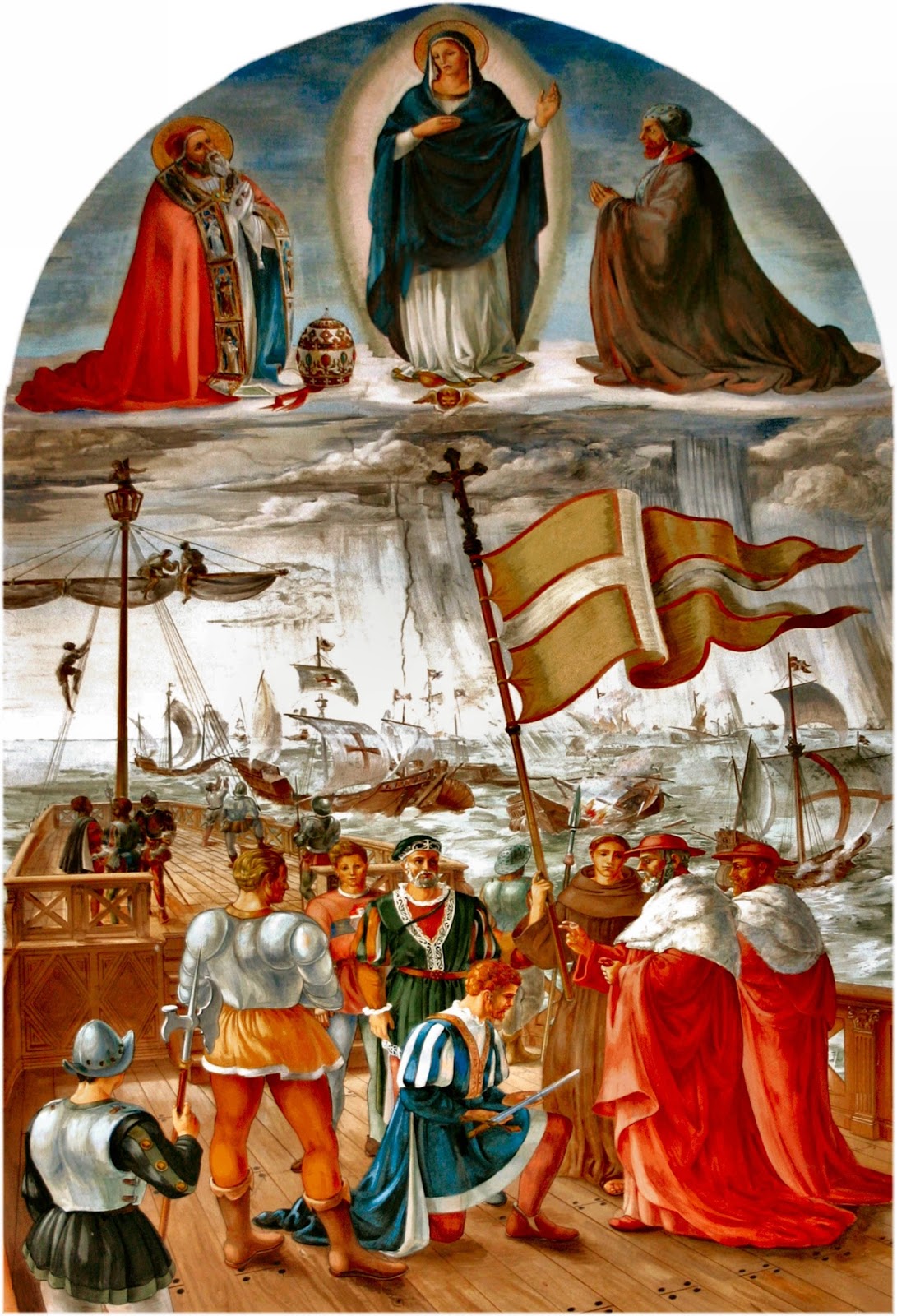
This story is exemplified by the Battle of Lepanto, fought by Don John of Austria, the last defender of Europe against the Turks. With divine assistance from Our Lady of Victory, Don John defeated the Turks and saved Europe from invasion. Born out of wedlock to Emperor Charles V, Don John was raised in the court of his half-brother, King Philip II of Spain. The bond between these two half-brothers was unique for the time, and had it not been for Philip’s affection and wisdom, Europe might have looked very different today.
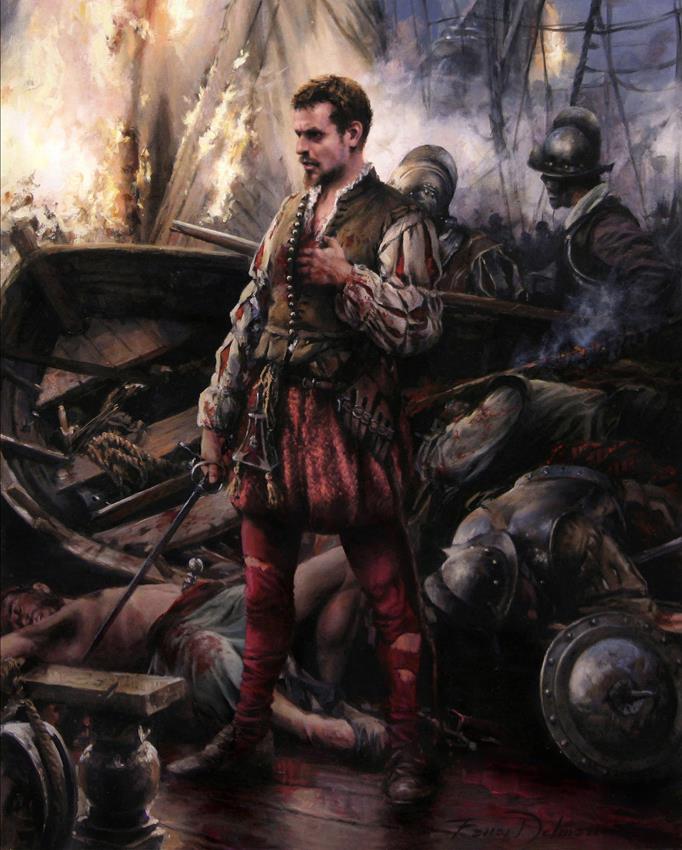
G.K. Chesterton calls Don John "the last knight of Europe" in his epic poem Lepanto. In 1571, when the Turks threatened Western civilization, Pope Pius V called for a crusade. Don John answered the call, as described in Chesterton's words: "Don John of Austria is going to the war." On October 7, 1571, Christian Europe prayed the Rosary, begging the Blessed Virgin to intercede for them in the battle. The Turks threatened to raise their crescent over St. Peter’s Basilica, but Our Lady heard the pleas of her children and turned the battle in favor of the Holy League and Don John.
One beautiful testimony worth sharing comes from the poet Miguel de Cervantes Saavedra, author of Don Quixote, who fought in the battle. After being mocked for his scars by a critic, Cervantes responded: "If my wounds are not resplendent in the eyes of the chance beholder, they are at least highly thought of by those who know where they were received. I would rather have taken part in that prodigious battle than be today free of my wounds without having been there."
Because of this victory, October is dedicated as the Month of the Rosary. All Catholics should pray the Rosary daily with increased devotion, just as Christians did on that fateful day in 1571. Like earlier Spanish heroes such as El Cid and Pelayo, Don John of Austria was a true patriot who protected Western civilization from destruction.
For further reading, I recommend Ten Battles Every Catholic Should Know for a detailed account of the Battle of Lepanto. Louis de Wohl’s The Last Crusader also comes highly recommended. Lastly, G.K. Chesterton’s Lepanto poem is both entertaining and inspiring, capturing the essence of this heroic battle.
6. My Final Example Of The Importance Of How Spanish Culture And Traditions Produce Heroes And How This Distracted Spaniard Found The Champion's Road
I will end now with a last example of how important storytelling is to Spain and how this love of heroes made famous Spanish people in history. I will finish with one last hero that this great nation produced.
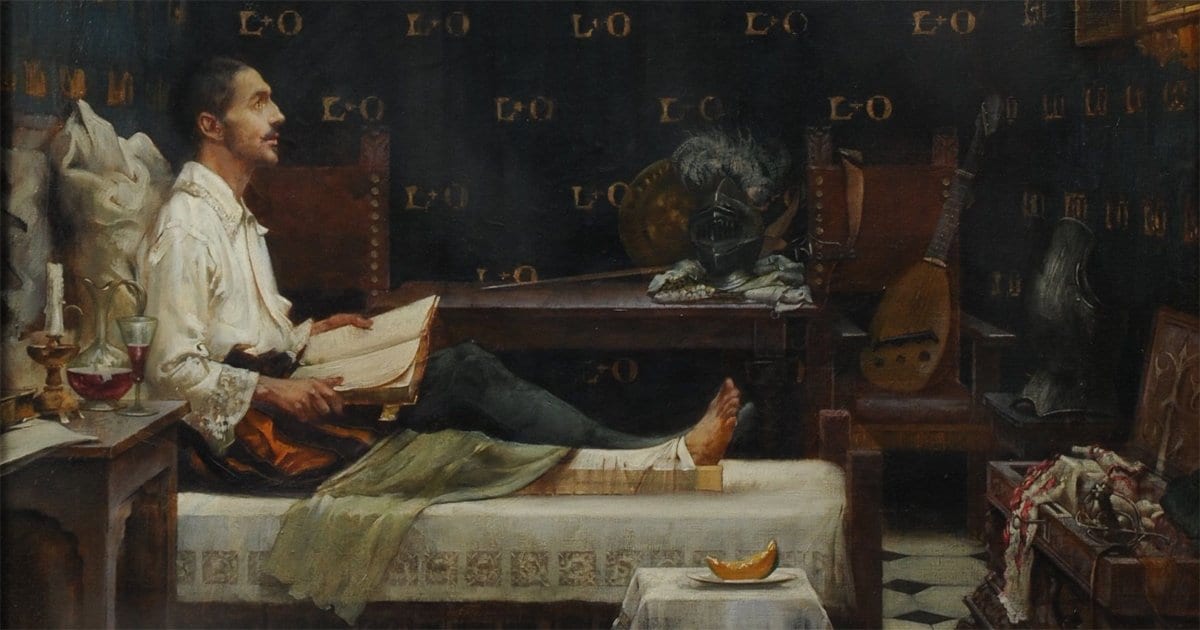
In his same book, The Jesuits, Malachi Martin shares the following, "Inigo was a mere babe in arms the day that Boabdil (Moorish leader) and his family gave that long last look at their beloved Granada. When he grew a little older and could understand, his family must have repeated to him the last words of sighing regret that floated in a loud wail back to the ears of the victorious Christians in the Court of Lions." Does this sound similar to Fitzhenry's "as a boy growing up in Vivar, it is certain that young Rodrigo would have been familiar with this story"? Or again, further down the page in El Cid he relates "another remarkable tale that Rodrigo would surely have known..."
We see again, in separate works the theme of Spanish storytelling. Martin continues, "Magdelena relieved her loneliness by telling the two-year-old Inigo fabulous tales of the New World. The stories about how the Sacred Crusade had won the Kingdom's safety against the Moor, how this knight or that soldier and faithfully served His Most Christian Majesty, leader of God's armies, were now expanded to include the empire and the whole world."
This little boy to whom his family had lovingly told stories of great deeds grew up to be a wild, distracted courtier. He was finally pinned down by Providence which forced him to read the lives of the saints to pass the time where "he underwent what is known in the language of religious experience as a profound conversion."
The Spaniard in question is none other than St. Ignatius of Loyola. (Print his coloring page here!) "The summons of Their Most Christian Majesty he heard no longer. It was Christ, the Supreme Leader, who was calling him now. Inigo was always looking to that 'more'. His ambition as courtier, as knight, as believer, had always been to excel above all others in whatever he undertook. Second place never interested him. His aim was not to promote the great glory of God, but as he said, 'the greater glory of God.'"
St. Ignatius seems like he wished that he were born a century earlier. He clearly wanted to be one of the famous Spanish people in history like Cortes but did not have the discipline to match the hero. He finally found his purpose in life and set out like a crusader, a conquistador and a champion to fulfill that for which he was born.
The Preserving And Telling Of The Stories Of National Heroes Generates A Society Which Produces Champions, Conquistadors And Commandos
Spain's endless war with the Infidel has made her a strong nation. For many years, famous Spanish people in history had to preserve their culture, customs, traditions and their Catholic identity. They did this artfully by handing down the stories of their nation's heroes as an example which exhorted them to live on principles of maximum effort, unwavering justice, and moderation. This heroism made the foundation of Spain's greatness.
Every Spaniard felt deeply attached and even fond of their nation's patron, St. James. The battle cry of Spain was given to them by he who enriched the Spanish culture and Catholic identity. Pelayo's story filled Spanish hearts with holy faith in the impossible. The honor that was given to the Cid by the Moors restored the Spanish confidence in their victory over the Infidel.
Finally we come to Isabella and Cortes and we see a disconnect. All we hear is their faults and their wrongs. They are made into blood-thirsty murderers when they were truly champions. Our handlers have seen the trend - Spaniards knew the stories of their heroes and they became champions. To upset the pattern, they must not be made into heroes. All their saintliness, chivalry and honor faces a great danger because it is ignored and not preserved.
We sometimes wish like St. Ignatius that we were born a few centuries earlier so that we could be heroes. But we have work to do here and that is sharing the stories of our heroes. Today needs champions more than ever before. That is why Fr. Garesche wrote a book calling all men and women to wake up, get inspired and become heroes. We need to find our purpose in life and set out like crusaders, conquistadors and champions to fulfill that which God placed us in this century for.
Subscribe To Our FREE Email Newsletter:
Awards:


#RebuildChristianArt Blog
An aid for families encouraging the reconstruction of the social fabric by sparking interest in Christian art and culture. Find beautiful novels, films, music, food and customs.
